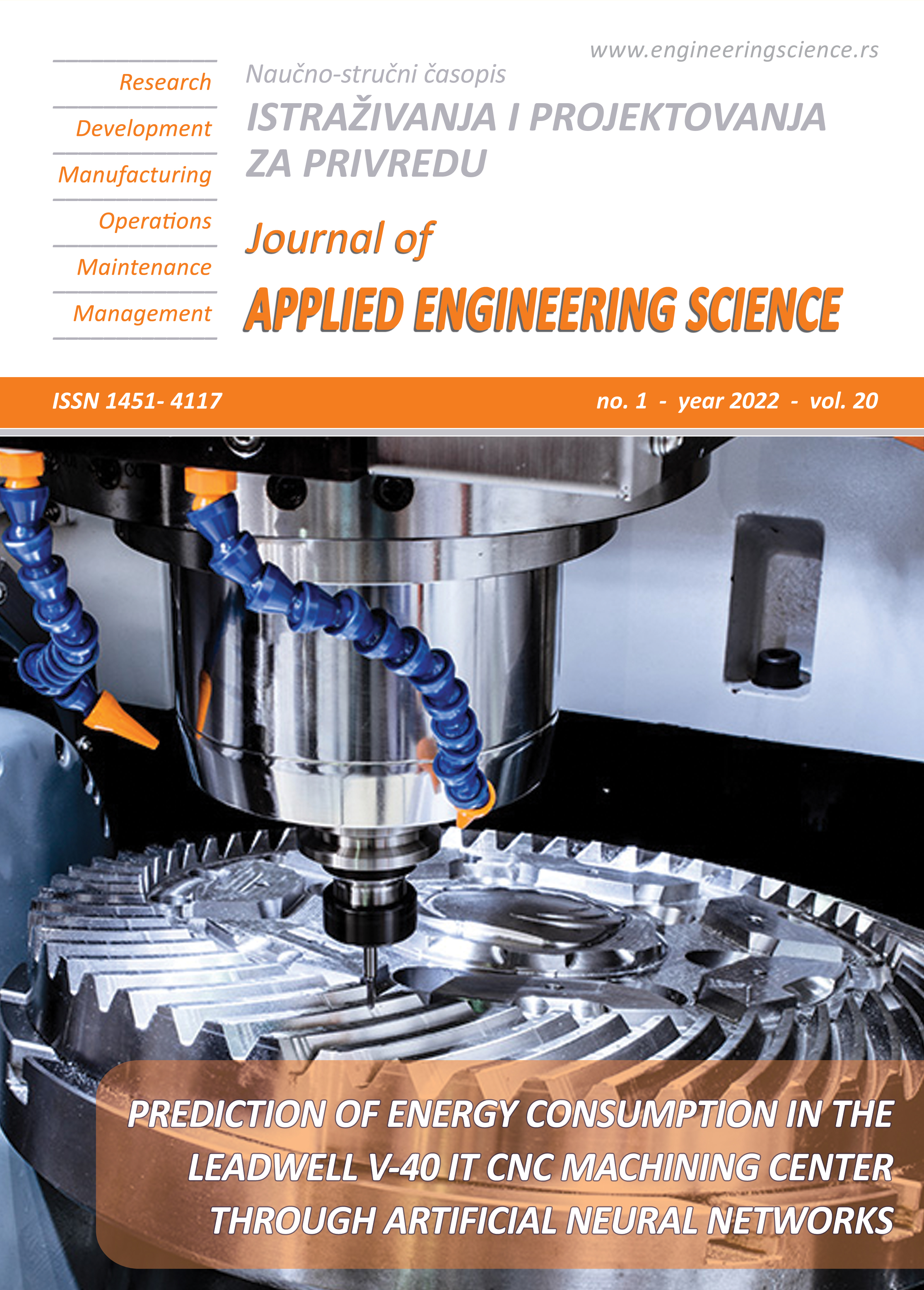INCREASED PRODUCTIVITY OF LIQUID SMOKE THROUGH FAST THAWING WITH REFRIGERATION SYSTEMS AT LOW AIR TEMPERATURE
Abstract
Liquid smoke increased in demand by the community because it is made from environmentally friendly waste can directly reduce the impact of environmental pollution. The smoke condensing process that is carried out conventionally using water can be continuously replaced using a refrigeration system, the smoke condensation process can be carried out using controlled low-temperature air, this can minimize machine space and energy. In this study, an analysis of variations in air temperature will be carried out to maximize the productivity of liquid smoke. The raw material for palm kernel shell is -4 + 5 mesh with cabin temperature variations of 15-10°C, 10-5°C, and 5-0°C and pyrolysis temperature of 300-400°C. Based on the research results obtained maximum results at a temperature of 5-0°C with 23.6% liquid smoke, 3.7% tar, 63.8% charcoal, and 8.9% gas. Based on the test results of chemical compounds, liquid smoke has an average phenol value of 56.59%. The lower the air temperature used to condense the smoke, the maximum liquid smoke will be and the less gas escapes to the air. It can directly reduce air pollution in the process of making liquid smoke.
References
Fu, H.-R., Wang, F., Zhang, J. (2015). A stable zinc-4-carboxypyrazole framework with high uptake and selectivity of light hydrocarbons. Dalton Transactions, vol. 44, no. 6, 2893-2896, DOI: 10.1039/c4dt03594a.
Huang, P., Chen, C., Wu, M., Jiang, F., Hong, M. (2019). An indium-organic framework for the efficient storage of light hydrocarbons and selective removal of organic dyes. Dalton Transactions, vol. 48, no. 17, 5527-5533, DOI: 10.1039/c9dt00902g.
Anderson, J.S., Romanak, K.D., Meckel, T.A. (2018). Assessment of shallow subsea hydrocarbons as a proxy for leakage at offshore geologic CO2 storage sites. International Journal of Greenhouse Gas Control, vol. 74, 19-27, DOI: 10.1016/j.ijggc.2018.04.010.
Vasilyev, A.O., Shemanin, V.G., Chartiy, P.V. (2011). IR detector for hydrocarbons concentration measurement in emissions during petroleum and oil products storage and transportation. Proc. SPIE 8155, Infrared Sensors, Devices, and Applications; and Single Photon Imaging II, 81550T (16 September 2011), DOI: 10.1117/12.893371
Anderson, J., Romanak, K., Alfi, M., Hovorka, S. (2019). Light hydrocarbon and noble gas migration as an analogue for potential CO2 leakage: numerical simulations and field data from three hydrocarbon systems. Greenhouse Gases: Science and Technology, 9, no. 2, 226-244, DOI: 10.1002/ghg.1841.
Zhao, X., Gong, G., Wu, S. (2018). Effect of storage time and temperature on parent and oxygenated polycyclic aromatic hydrocarbons in crude and refined vegetable oils. Food Chemistry, vol. 239, 781-788, DOI: 10.1016/j.foodchem.2017.07.016.
Gong, G., Wu, S., Wu, X. (2018). Influences of light intensity and β-carotene on polycyclic aromatic hydrocarbons and aldehydes in vegetable oil: a case study using palm oil. Journal of Agricultural and Food Chemistry,vol. 66, no. 42, 11124-11132, DOI: 10.1021/acs.jafc.8b04096.
Cañipa-Morales, N.K., Galán-Vidal, C.A., Guzmán-Vega, M.A., Jarvie, D.M. (2003). Effect of evaporation on C7 light hydrocarbon parameters. Organic Geochemistry, 34, no. 6, 813-826, DOI: 10.1016/S0146-6380(03)00002-0.
Iaiani, M., Casson Moreno, V., Reniers, G., Tugnoli, A., Cozzani, V. (2021). Analysis of events involving the intentional release of hazardous substances from industrial facilities. Reliability Engineering and System Safety, vol. 212, article number 107593, DOI: 10.1016/j.ress.2021.107593.
Lauritsen, H., Kassold, S., Meneguolo, R., Furre, A. (2018). Assessing potential influence of nearby hydrocarbon production on CO2 storage at Smeaheia. Fifth CO2 Geological Storage Workshop 2018, p. 1-5, DOI: 10.3997/2214-4609.201802970.
Belmabkhout, Y., Mouttaki, H., Eubank, J.F., Guillerm, V., Eddaoudi, M. (2014). Effect of pendant isophthalic acid moieties on the adsorption properties of light hydrocarbons in HKUST-1-like tbo -MOFs: Application to methane purification and storage. RSC Advances, 4, no. 109, 63855-63859, DOI: 10.1039/c4ra12432d.
Liu, X., Fan, W., Zhang, M., Li, G., Liu, H., Sun, D., Guo, W. (2018). Enhancing light hydrocarbon storage and separation through introducing Lewis basic nitrogen sites within a carboxylate-decorated copper-organic framework. Materials Chemistry Frontiers, vol. 2, no. 6, 1146-1154, DOI: 10.1039/c8qm00105g.
Fan, W., Liu, X., Wang, X., Li, Y., Xing, C., Wang, Y., Sun, D. (2018). A fluorine-functionalized microporous In-MOF with high physicochemical stability for light hydrocarbon storage and separation. Inorganic Chemistry Frontiers, vol. 5, no. 10, 2445-2449, DOI: 10.1039/c8qi00652k.
Kanazawa, T. (2004). Development of hydrocarbon adsorbents, oxygen storage materials for three-way catalysts and NOx storage-reduction catalyst. Catalysis Today, vol. 96, no. 3, 171-177, DOI: 10.1016/j.cattod.2004.06.119.
Chen, B. (2017). An ultrastable and easily regenerated HOF for the selective storage and separation of light hydrocarbons. Science China Chemistry, 60, no. 6, 683-684, DOI: 10.1007/s11426-017-9045-9.
Liu, X., Li, X., Li, J., Li, G., Guo, S., Zhu, H., Guo, W. (2018). Anionic NbO-type copper organic framework decorated with carboxylate groups for light hydrocarbons separation under ambient conditions. Journal of Materials Science, vol. 53, 8866-8877, DOI: 10.1007/s10853-018-2155-1.
Fan, W., Wang, X., Zhang, X., Liu, X., Wang, Y., Kang, Z., Sun, D. (2019). Fine-tuning the pore environment of the microporous Cu-MOF for high propylene storage and efficient separation of light hydrocarbons. ACS Central Science, vol. 5, no. 7, 1261-1268, DOI: 10.1021/acscentsci.9b00423.
Omelchuk, M.V. (2017). Scientific substantiation of the methodology for assessing the safety of storage facilities for light hydrocarbons in emergency situations. Ufa State Oil Technical University, Ufa.
Permyakov, V.N., Parfenov, V.G., Omelchuk, M.V. (2015). Methodology for assessing the stability of storage facilities for liquefied hydrocarbon gases. Safety and Emergency Issues, vol. 6, 73-79.
Wang, Y., Wang, X., Wang, X., Zhang, X., Fan, W., Liu, D., Sun, D. (2019). Effect of functional groups on the adsorption of light hydrocarbons in FMJ-type metal-organic frameworks. Crystal Growth and Design,vol.19, no. 2, 832-838, DOI: 10.1021/acs.cgd.8b01403.
Wang, J., Elsworth, D. (2020). Fracture penetration and proppant transport in gas- and foam-fracturing. Journal of Natural Gas Science and Engineering, vol. 77, article number 103269, DOI: 10.1016/j.jngse.2020.103269.
Fu, H.-R., Zhang, J. (2015). Flexible porous zinc-pyrazole-adenine framework for hysteretic sorption of light hydrocarbons. Crystal Growth and Design, 15, no. 3, 1210-1213, DOI: 10.1021/cg5016093.

